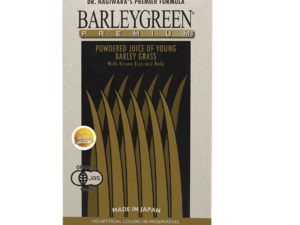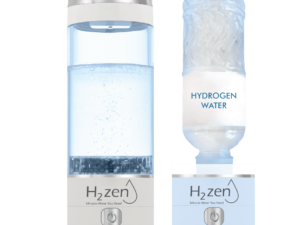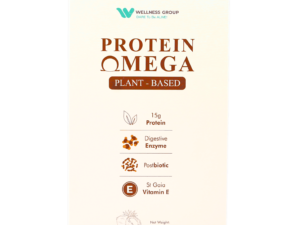Surprising fact: small trials suggest that drinking up to two liters daily produced measurable sprint gains in cyclists and lower lactate in soccer players. That contrast — big claims from small studies — sets the scene for this piece.
What is on offer? The drink is plain water with extra dissolved hydrogen. It is sold in cans, pouches, tablets, or made with machines at home.
Marketing talks about reduced inflammation, faster recovery, and anti-aging. Yet current research remains limited. Studies show some shifts in blood markers and oxidative stress, but sample sizes are small and doses vary.
This article helps athletes decide if the trend is a real edge or slick marketing. It reviews claimed benefits, key study results, and practical tips on packaging, stability, and timing around training in Malaysia’s hot, humid climate.
Want tailored advice? Contact Wellness Group on WhatsApp at +60123822655. Business hours: Mon–Fri 9:30 am–6:30 pm; Sat–Sun 10 am–5 pm.
Key Takeaways
- Small studies report reduced lactate and improved sprint power in some cases.
- Product quality and dissolved levels vary; packaging and timing matter.
- Evidence is promising but not yet strong enough for firm conclusions.
- A practical, cautious approach suits athletes in Malaysia’s climate.
- Contact Wellness Group via WhatsApp for athlete-focused guidance and checks.
Why Athletes in Malaysia Are Asking: Performance Booster or Just Hype?
From locker rooms to Instagram stories, a small beverage trend has sparked big questions among competitors.
Malaysian athletes see canned options, tablets, and home devices everywhere and want clear answers about real training effects versus marketing noise.
Quick snapshot: early research shows promising signals but not firm proof. GRAS status supports general safety, yet brands do not use a single standard for concentration or dosing.
“Media buzz often moves faster than the science,”
Small studies report lower lactate or modest gains in sprint power, but trials are few and varied. Packaging, dissolved levels, and stability differ between each product and influence reported results.
Readers need to separate anecdotes from controlled trials. Consider training goals—recovery, power, or reduced perceived effort—before deciding if this product fits a regimen.
Need help comparing options? Wellness Group can provide athlete-specific comparisons via hydrogen water for recovery. WhatsApp +60123822655 (Mon–Fri 9:30 am–6:30 pm; Sat–Sun 10 am–5 pm).
What Is Hydrogen-Rich Water and How Is It Made?
Not all bottled options are equal; the manufacturing step that adds dissolved gas determines how long benefits may last.
Definition: Hydrogen-rich water is plain water with extra dissolved molecular hydrogen. This differs from the hydrogen bound to oxygen in H2O; additional H2 gas sits as small molecules dissolved in the liquid.
Molecular action and safety
Researchers propose that molecular hydrogen acts as a selective antioxidant. It targets certain reactive oxygen species without blocking useful cell signals that aid recovery.
How it is produced
- Electrolysis units split and reintroduce gas into liquid.
- Manufacturers infuse gas under pressure then seal in cans or pouches.
- Effervescent tablets generate gas on the spot; home machines offer ongoing supply.
Product variability and practical tips
There is no industry standard for dissolved levels. Packaging quality affects retention; non-permeable cans or pouches hold gas longer.
| Method | Typical Cost | Retention | Portability |
|---|---|---|---|
| Pre-packed cans/pouches | High (e.g., $90/30) | Good if sealed | High |
| Tablets | Low–Medium | Variable after activation | Very high |
| Home machines | High (device cost) | Depends on use | Low |
| Electrolysis units | Medium–High | Moderate | Low |
Practical note: Drink soon after opening to limit diffusion. GRAS status supports safety, but wide differences in product levels explain mixed research outcomes. For help comparing products and checking levels in Malaysia, contact Wellness Group on WhatsApp at +60123822655 (Mon–Fri 9:30 am–6:30 pm; Sat–Sun 10 am–5 pm).
How Hydrogen Water Might Work During Exercise
High-intensity sessions drive a surge in reactive oxygen species that can change how muscles feel and recover.
Oxidative stress and muscle pathways: Intense activity raises reactive oxygen species (ROS) in working tissue. This rise can impair mitochondrial function and speed fatigue in skeletal muscle. Small shifts in cellular redox state alter contraction efficiency and repair needs.
Selective scavenging idea: Molecular hydrogen is proposed to target harmful free radicals while sparing helpful signals. That selectivity could protect cells and mitochondria under load without blocking adaptations that come from training.

Links to lactate and breathing
Oxidative stress interacts with lactate buildup and blood acid balance. These changes shape perceived exertion and pacing.
Some sports medicine work reported improved ventilatory markers and lower lactate after hydrogen-rich water, suggesting smoother breathing and recovery in certain sessions.
- Possible on-session effects: steadier energy, moderated stress signaling, and clearer pacing.
- Magnitude varies by training status, session design, and individual response.
“Track heart rate, perceived effort, and blood lactate when testing any supplement in a training block.”
Practical note: Athletes in Malaysia who want a protocol that times intake around sessions can message Wellness Group on WhatsApp at +60123822655 during business hours.
Evidence That Supports Athletic Benefits
Clinical signals are limited but consistent enough to merit cautious interest.
Several small studies note reduced post-exercise lactate and lower reported muscle fatigue in team-sport players who drank about 1,500 ml daily. In one study of ten male soccer players, blood lactate fell and subjective fatigue improved versus placebo.
Changes seen in cyclists
In a short trial of eight male cyclists, two liters per day over two weeks was linked to higher sprint power. The sample was small, so results need replication before broad claims about athletic performance are made.
Ventilation and perceived effort
Sports medicine research reported modest gains in ventilatory markers and lower perceived exertion alongside reduced lactate in controlled settings. These signs suggest the effects may aid high-intensity activity and interval work.
| Study Group | Intake | Reported Effects | Notes |
|---|---|---|---|
| Male soccer players (n=10) | 1,500 ml/day | Lower blood lactate; less fatigue | Placebo-controlled; small sample |
| Male cyclists (n=8) | 2 L/day, 2 weeks | Greater sprint power | Short duration; needs replication |
| Sports medicine cohort | Varied | Improved ventilatory and perceptual responses | Supports training-adjacent effects |
| Metabolic syndrome trial | 24 weeks | Better lipids; lower inflammation | Longer-term systemic benefits |
Takeaway: These studies are promising signals rather than definitive proof. Product stability, daily consistency, and dosing variability likely affect results.
“Treat small trials as hypotheses to test in your own program.”
For help interpreting results and testing whether hydrogen water improve specific goals, Wellness Group is available on WhatsApp at +60123822655 during business hours.
Hydrogen Water for Athletes: Performance Booster or Hype?
The trend prompts a practical question: does adding dissolved gas to liquids translate to real gains in training? Athletes and coaches need a clear, balanced view before adding any product to a regimen.
Pros
Potential antioxidant support may reduce exercise-related oxidative stress and aid recovery between sessions.
Early studies show signals of lower perceived fatigue and modest inflammation modulation that could help muscle repair after intense efforts.
Some short trials reported gains in sprint power and quicker recovery, which may suit high-intensity or team-sport routines.
Cons
Evidence limits: most trials are small, short, and varied, so findings are tentative rather than definitive.
Healthy, well-trained adults show mixed results on oxidative markers, and optimal dosing and timing remain unclear.
Product heterogeneity—different concentrations, containers, and shelf stability—likely explains inconsistent effects across studies.
“Treat early trials as signals to test in your own program, not as proof of universal benefit.”
- Benefits include recovery support and possible reduced exertion; effects vary by individual and session type.
- Research gaps and dosing uncertainty mean athletes should not replace core training basics.
- For objective product review and protocol design, contact Wellness Group via WhatsApp at +60123822655 (Mon–Fri 9:30 am–6:30 pm; Sat–Sun 10 am–5 pm).
Beyond Performance: Health Angles Relevant to Athletes
Urban pollution and dense training schedules create a steady load on the body’s repair systems.

Reduce oxidative stress in high-load training and urban exposure
City air and heavy sessions add oxidative stress beyond exercise alone. This layered load can slow recovery and raise inflammation that affects long-term health.
Small trials report that a daily intake of hydrogen-rich water reduced inflammatory responses and markers of oxidative damage in healthy adults.
Metabolic syndrome markers: lipid profiles and inflammatory levels
Longer studies in people with metabolic syndrome showed improved LDL/HDL ratios and lower inflammatory markers after regular intake. These changes may support athlete health planning, especially for those at risk.
Mood, fatigue, and autonomic balance
Pilot work suggests mood and heart-rate variability improved in some subjects. These early signals hint that managing cumulative stress could cut perceived fatigue and help travel recovery.
| Biomarker | Reported Change | Practical Note |
|---|---|---|
| Inflammation (CRP) | Reduced in small trials | May aid recovery between heavy blocks |
| Lipids (LDL/HDL) | Improved in metabolic syndrome study | Longer use and context matter |
| Oxidative markers | Lower levels reported | Helps when pollution or sleep loss add stress |
| Autonomic function | Better HRV, mood gains | Track alongside sleep and training load |
Practical takeaway: Antioxidant support can help reduce oxidative stress when combined with sleep, nutrition, and periodized recovery. Athletes in Malaysian cities should test personal responses and track energy, mood, and HRV alongside training metrics.
“Track personal health markers, not anecdotes, when adding any new recovery tool.”
If athletes want a tailored wellness plan that accounts for air quality and load, message Wellness Group at +60123822655 (Mon–Fri 9:30 am–6:30 pm; Sat–Sun 10 am–5 pm).
Safety, Dosing, and Practical Use
Practical safety and dosing questions matter more than marketing slogans when athletes consider a new recovery tool.
Safety first. The substance has GRAS status and is generally safe at typical intakes. Athletes should start conservatively and watch individual responses in energy, sleep, and next-day fatigue.
Recommended intake and timing
Studies often used about 1.5–2.0 liters per day, but there is no standard dose. A simple trial plan is useful: a small priming drink before intense sessions, sips during long workouts, and a measured amount after training aimed at recovery.
Packaging and product selection
Choose non-permeable containers and drink soon after opening to retain dissolved levels. Check stated hydrogen levels, freshness dates, and reputable suppliers before purchase.
Cautions and monitoring
High-dose antioxidant strategies can blunt training adaptations if used constantly. Use this aid selectively around heavy blocks rather than every day.
“Track RPE, HRV, and next-day fatigue when testing any new recovery tool.”
For product selection and dosing guidance, contact Wellness Group on WhatsApp at +60123822655 (Mon–Fri 9:30 am–6:30 pm; Sat–Sun 10 am–5 pm).
Malaysia Context: Training Climate, Air Quality, and Real-World Factors
Malaysia’s hot, humid days and heavy traffic create extra physiological load that changes how recovery strategies work.
Heat and humidity raise core strain and sweat losses. This increases fluid needs and can heighten oxidative stress during and after activity. Athletes should prioritise cooling, salt replacement, and planned fluids to limit harm.
Urban pollution adds a second layer. Traffic-related particles drive inflammation and raise baseline oxidative markers. When combined with hard sessions, the effect on health and recovery can be meaningful.
Practical note: carry non-permeable bottles and drink at set intervals during outdoor work. Test any adjunct—such as hydrogen water—during weeks with high environmental load to see if perceived recovery or session quality improves.
- Coordinate adjuncts with heat-acclimation and cooling plans.
- Monitor simple indicators: sleep quality, morning readiness, and session outputs.
- Use targeted trials around travel or heavy blocks, not every day.
“Treat adjuncts as one lever among many; sleep, nutrition and pacing must come first.”
Need Malaysia-specific recommendations? Message Wellness Group on WhatsApp at +60123822655 (Mon–Fri 9:30 am–6:30 pm; Sat–Sun 10 am–5 pm).
Wellness Group Can Help You Decide
Wellness Group offers a clear, practical route to test new recovery aids without wasting time or money.
Talk to a specialist:
WhatsApp +60123822655
Business hours
Monday 9:30 am–6:30 pm; Tuesday 9:30 am–6:30 pm; Wednesday 9:30 am–6:30 pm; Thursday 9:30 am–6:30 pm; Friday 9:30 am–6:30 pm; Saturday 10 am–5 pm; Sunday 10 am–5 pm.
They help athletes compare product claims and translate research into usable plans. Specialists check claimed levels and freshness. They also suggest practical timing around training and travel in Malaysia’s climate.
- Compare products and assess stated hydrogen levels at bottling and expected levels at use.
- Ask about packaging type and non-permeable containers to protect retention.
- Get tailored protocols for pre-, during, and post-session intake and recovery tracking.
- Receive realistic expectations on benefits, study limitations, and cost–benefit trade-offs.
| Service | What they check | Outcome |
|---|---|---|
| Product review | Packaging, stated levels, freshness | Clear buying advice |
| Protocol design | Training phase, session type, climate | Practical intake plan |
| Research translation | Study relevance and limits | Realistic benefit estimate |
| Value assessment | Cost, shelf life, ease of use | Cost–benefit guidance |
“Ask about levels at bottling and expected levels at consumption when comparing products.”
Quick note: Experts recommend non-permeable containers and rapid consumption to keep dissolved gas levels high. Message Wellness Group on WhatsApp +60123822655 during business hours for impartial guidance.
Conclusion
Limited studies reveal signals—reduced lactate, slight sprint gains—that deserve structured replication.
Bottom line: Small trials and longer metabolic work suggest real health benefits and plausible mechanisms. Molecular hydrogen is proposed as a selective antioxidant that targets free radicals and may reduce oxidative stress without blunting adaptations.
Practical value depends on product quality, packaging, timing, and individual response. Athletes in Malaysia should trial use during high-load blocks, track muscle fatigue, blood markers, and session outputs, and keep sleep and nutrition first.
For a final decision and a tailored plan, message Wellness Group on WhatsApp at +60123822655 (Mon–Fri 9:30 am–6:30 pm; Sat–Sun 10 am–5 pm).
FAQ
What is molecular hydrogen-rich water and how does it differ from regular drinking water?
It is ordinary drinking fluid infused with dissolved H2 gas. The dissolved molecules act as selective antioxidants, targeting reactive oxygen species linked to cell stress. Production methods vary — electrolysis, pressurized infusion, and tablets — and this creates differences in concentration and shelf stability.
Can athletes expect measurable improvements in training or competition from drinking hydrogen-rich water?
Some small trials report benefits such as reduced blood lactate, lower perceived fatigue, and modest power gains in short efforts. However, results are mixed and sample sizes are limited. Benefits are more likely in high oxidative-stress scenarios than in already well-conditioned, healthy athletes.
How strong is the scientific evidence supporting these effects?
Evidence is preliminary. Several randomized and crossover trials show positive signals, but many are small, use different doses, and focus on specific sports. Larger, standardized studies are needed before broad conclusions can be drawn.
Are there safety concerns or known side effects from drinking hydrogen-rich water?
It is generally regarded as safe when consumed at typical doses used in studies. Long-term data are limited, and theoretical concerns exist about over-suppressing normal redox signaling, so athletes should avoid excessive use and consult a sports clinician when in doubt.
When should an athlete drink it for the best chance of benefit — before, during, or after exercise?
Trials use different timing. Some benefits appear when taken before or during high-intensity sessions to blunt acute oxidative stress and perceived exertion; others use post-exercise intake to support recovery. Practical advice: consume close to exercise and within minutes if using bottled or freshly prepared products.
How much dissolved hydrogen is considered an effective dose?
There is no universally accepted dose. Studies report effective ranges from modest to higher ppm concentrations. Product labeling and independent testing matter. Athletes should follow manufacturer guidance and prefer products with validated concentration data.
Do product form and packaging matter?
Yes. Metal-lined or non-permeable containers preserve dissolved gas longer than thin plastic. Tablets and on-site generators can create fresh solutions but vary in output. Check for reputable brands and third-party verification of concentration and shelf life.
Will it help with long-term markers like inflammation or metabolic risk?
Early clinical work suggests potential improvements in some inflammatory markers and lipid profiles in at-risk populations. For athletes, the primary interest is acute recovery and oxidative stress reduction; long-term metabolic benefits need larger trials.
Is it better than established recovery strategies like nutrition, sleep, and active recovery?
It should not replace proven practices. Proper nutrition, sleep, periodization, and recovery modalities remain primary. Hydrogen-rich products may serve as an adjunct in specific situations but offer limited value if basic recovery is neglected.
How does local context — for example, Malaysia’s climate and air quality — affect potential benefits?
Hot, humid training and urban air pollution increase oxidative stress and inflammation, potentially making antioxidant strategies more relevant. That said, environmental stressors don’t guarantee benefit; individual response and evidence quality still guide use.
Can any athlete use it, including young athletes and those with medical conditions?
Recreational adults typically tolerate it well, but young athletes and people with health conditions should consult a healthcare professional. Sports physicians can advise on interactions with medication and specific health states.
How should teams or coaches evaluate product claims when buying for groups?
Ask for laboratory verification of dissolved-gas concentration, stability data, and batch testing. Prefer suppliers with transparent manufacturing methods and return policies. Consider pilot testing with athlete monitoring before wider adoption.
Where can athletes in Malaysia get expert guidance or ask specific questions?
Wellness Group offers product consultations and athlete protocols. They can be contacted via WhatsApp at +60123822655 during business hours: Mon–Fri 9:30 am–6:30 pm and Sat–Sun 10 am–5 pm.






